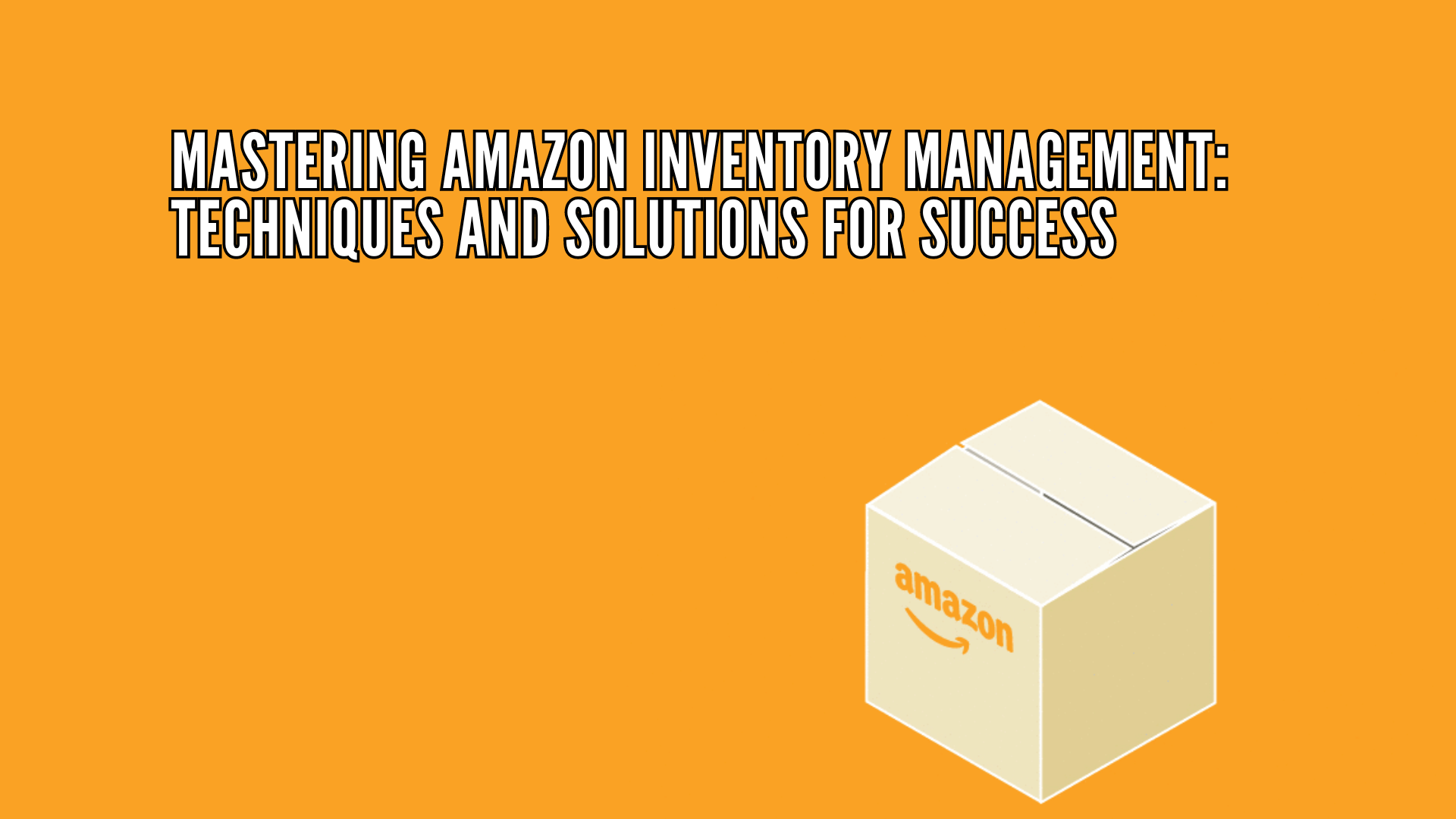Effective inventory management is crucial for any e-commerce business, especially on a platform as vast and competitive as Amazon. Proper inventory practices ensure you meet customer demand without overstocking, minimize storage costs, and maintain high seller performance metrics. In this blog, we’ll explore key techniques and solutions to optimize your Amazon inventory management.
Why is Amazon Inventory Management Important?
- Customer Satisfaction: Proper stock levels prevent stockouts, leading to timely order fulfillment and satisfied customers.
- Cost Efficiency: Balancing inventory avoids the pitfalls of overstocking, such as increased storage fees and potential unsold inventory.
- Sales Performance: Consistent stock levels maintain your product’s availability, crucial for ranking and the Buy Box advantage.
- Cash Flow Management: Efficient inventory management ensures capital is not tied up unnecessarily in stock.
Key Inventory Management Techniques
1. Demand Forecasting
Accurate demand forecasting is foundational. Use historical sales data, seasonal trends, and market analysis to predict future demand. Amazon’s tools, like the Restock Inventory Tool, provide insights based on your sales history and inventory levels.
- Historical Data: Review sales patterns over the last year or longer.
- Seasonal Trends: Account for holidays, seasonal spikes, and industry-specific cycles.
- Market Trends: Stay updated with market research and competitor analysis.
2. Inventory Replenishment Strategies
Implement replenishment strategies to maintain optimal stock levels:
- Just-In-Time (JIT): Keep inventory levels low by replenishing just before stock runs out. This minimizes holding costs but requires precise demand forecasting and reliable suppliers.
- Safety Stock: Maintain a buffer stock to cover unexpected spikes in demand or supply chain disruptions.
- Reorder Point Formula: Calculate when to reorder using the formula: Reorder Point=(Average Daily Sales×Lead Time)+Safety Stock\text{Reorder Point} = (\text{Average Daily Sales} \times \text{Lead Time}) + \text{Safety Stock}Reorder Point=(Average Daily Sales×Lead Time)+Safety Stock
3. Inventory Turnover Ratio
Monitor the inventory turnover ratio to gauge how quickly your inventory sells over a given period. A high turnover rate indicates strong sales and effective inventory management. Aim to balance turnover rates to avoid stockouts and overstocking.
4. SKU Rationalization
Regularly evaluate your product portfolio:
- Best Sellers: Prioritize inventory for high-demand products.
- Slow Movers: Consider discounts, promotions, or discontinuing slow-moving items.
- Dead Stock: Identify and address unsellable stock that occupies valuable storage space.
5. Supplier Relationship Management
Strong supplier relationships are vital. Reliable suppliers help ensure timely replenishment and quality consistency. Negotiate favorable terms and maintain open communication to handle supply chain disruptions effectively.
6. Automation and Integration
Utilize technology to streamline inventory processes:
- Inventory Management Software: Tools like SellerCloud, Skubana, and RestockPro automate tracking, forecasting, and replenishment.
- ERP Systems: Enterprise Resource Planning (ERP) systems integrate inventory management with other business processes, providing comprehensive oversight.
- API Integrations: Connect your Amazon store with inventory management systems for real-time updates and streamlined operations.
Solutions to Enhance Inventory Management
1. Fulfillment by Amazon (FBA)
FBA simplifies inventory management by handling storage, shipping, and customer service for you. While it incurs fees, it offers several benefits:
- Prime Eligibility: Access to Amazon Prime customers.
- Scalability: Amazon’s network manages your inventory, allowing you to focus on other business aspects.
- Customer Trust: FBA products often enjoy higher customer trust due to Amazon’s handling.
2. Amazon Inventory Performance Index (IPI)
Monitor your IPI score to manage your inventory health. This score reflects your efficiency in managing inventory and impacts your ability to store goods in Amazon warehouses.
- Factors: The IPI score is influenced by excess inventory, sell-through rate, stranded inventory, and in-stock inventory.
- Improvement Tips: Clear excess stock, maintain balanced inventory, and quickly address stranded inventory to boost your IPI score.
3. Third-Party Logistics (3PL)
Consider 3PL providers for additional flexibility:
- Multi-Channel Fulfillment: Manage inventory across multiple sales channels, not just Amazon.
- Cost Efficiency: Outsourcing warehousing and fulfillment can reduce operational costs.
- Scalability: Easily scale operations without investing in infrastructure.
4. Amazon Vendor Central vs. Seller Central
Decide between Amazon’s Vendor Central and Seller Central based on your business needs:
- Vendor Central: You act as a supplier to Amazon. They buy your products wholesale, handle pricing and customer service, but you lose some control.
- Seller Central: You sell directly to consumers on Amazon. You maintain control over pricing and listings, but manage inventory and fulfillment.
Best Practices for Optimizing Inventory Management
- Regular Audits: Conduct frequent inventory audits to ensure accuracy and identify discrepancies early.
- Data-Driven Decisions: Rely on analytics and KPIs to inform your inventory decisions.
- Flexible Planning: Adapt your strategies based on changing market conditions and sales data.
- Continuous Improvement: Regularly review and refine your inventory processes to enhance efficiency and performance.
Conclusion
Effective inventory management on Amazon is a balancing act of maintaining stock levels to meet demand while minimizing costs and maximizing sales performance. By leveraging advanced techniques and solutions, you can ensure your inventory practices contribute positively to your overall business success on Amazon.
Implement these strategies, monitor your performance, and stay agile to navigate the ever-changing e-commerce landscape.
By mastering these techniques and solutions, you’ll be well-equipped to manage your Amazon inventory effectively and set your business up for sustained success.









